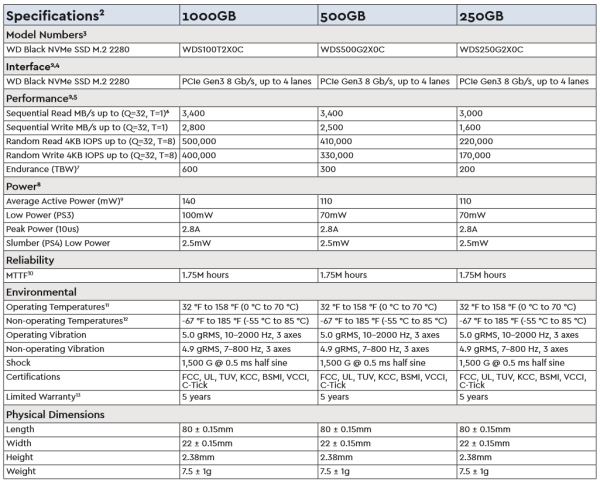

Model: Western Digital WD Black NVMe 1TB Solid State Drive
Manufacturer: Western Digital
Provided By: Western Digital
As one of the biggest names in the storage industry, Western Digital doesn't need much of an introduction. Founded in 1970, the company got its start by manufacturing calculator chips. As time went on, Western Digital expanded into the PC market, adding floppy and hard disc controllers to its product lineup. It wasn't until 1988 that it introduced its "Centaur" series of hard drives. Since then, the company has grown to become the world's second largest manufacturer of hard drives. Western Digital currently offers a wide range of internal and external hard drives as well as a growing number of multimedia devices, SSDs and network storage solutions.
This spring, Western Digital launched its latest PCIe NVMe SSD, the WD Black NVMe. Built to boost the performance of gaming systems, this M.2 form factor drive is powered by Western Digital's own Spectrum controller and is available with up to 1TB of the company's 64-layer BiCS 3D TLC NAND flash. To compensate for the slow write speeds typically associated with TLC NAND, the WD Black NVMe uses nCache 3.0 technology, which leverages tiered caching to improve both burst and sustained write performance. The WD Black NVMe is also equipped with a PCIe Gen3 x4 NVMe 1.3 interface to provide low latency and data transfer speeds that are up to six times faster than your average SATA 6Gb/s SSD.
The WD Black NVMe is available in 250GB, 500GB and 1TB capacities. For this review, Western Digital sent us the 1TB version of the drive, which is capable of delivering up to 3,400 MB/s sequential read and 2,800 MB/s sequential write speeds as well as up to 500,000 random read and 400,000 random write IOPS.

Needless to say, this is only a taste of what the WD Black NVMe has to offer. To give you an idea of what to expect, we'll take a closer look at Western Digital's new NVMe SSD and then see how well it performs. Does the WD Black NVMe have what it takes? More importantly, is it the best bang for your buck? Keep reading as we find out.

